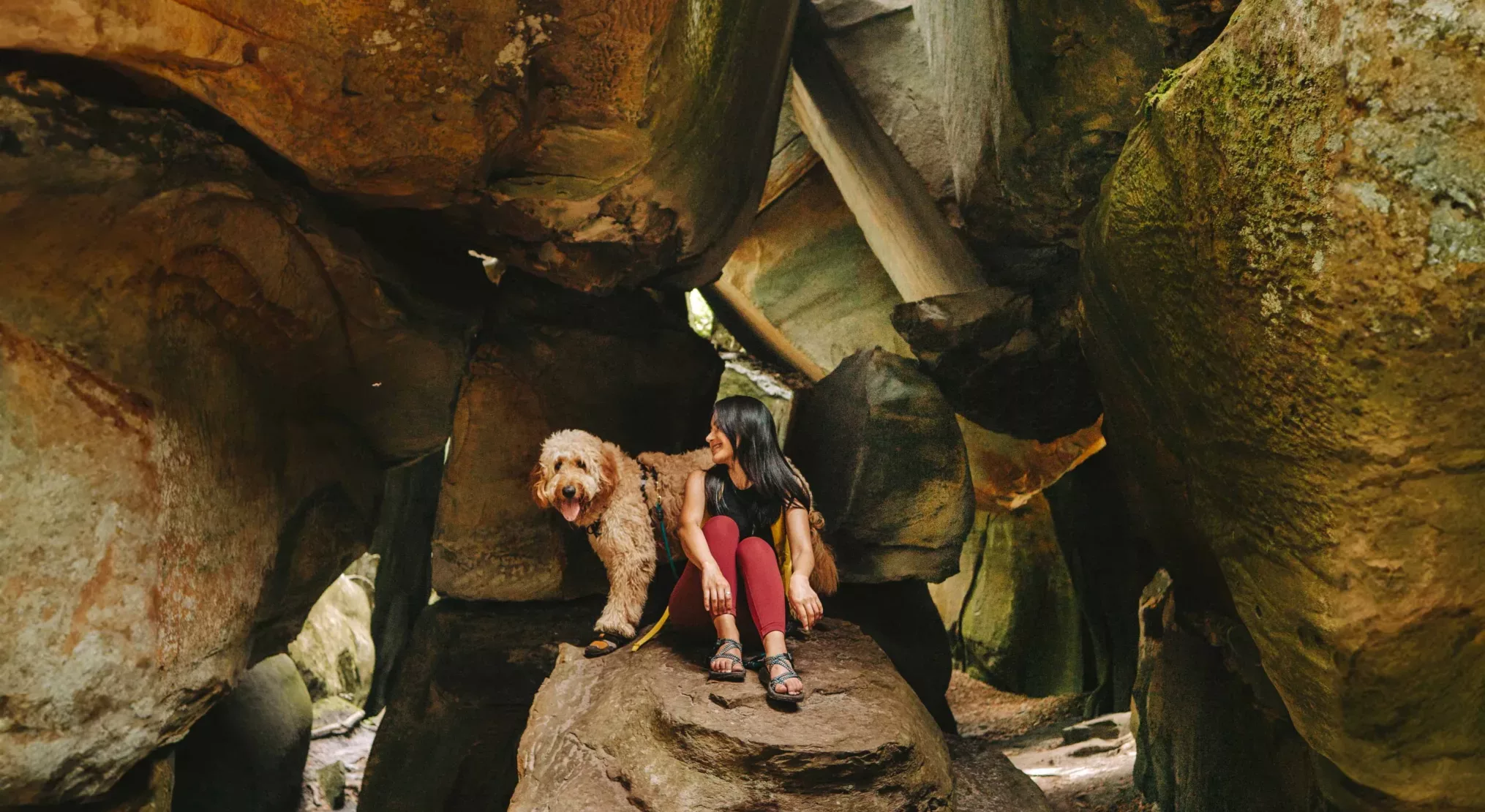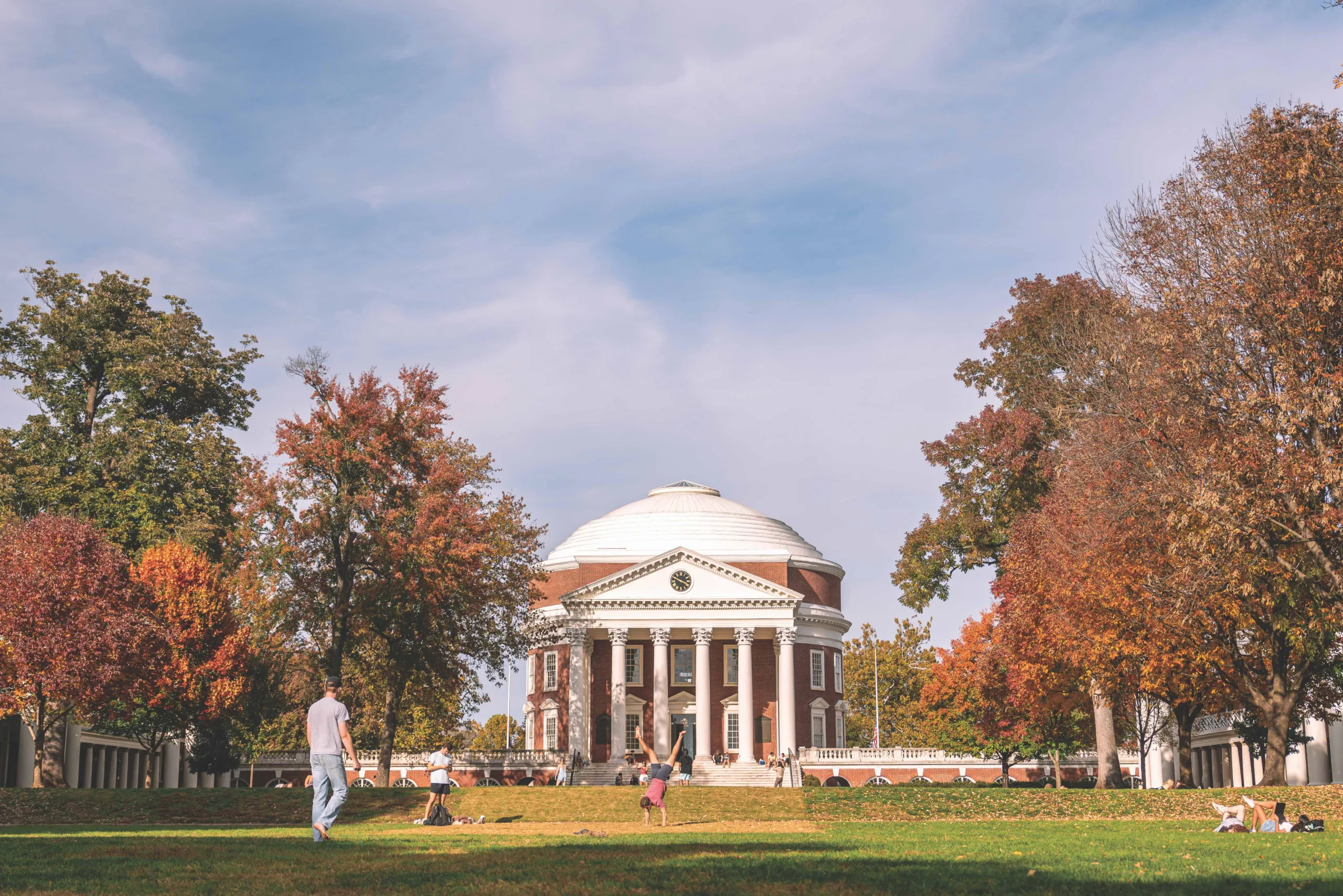The tough, three-mile hike winds through stands of maturing oaks, hickories, and near-magical rhododendron thickets. It opens abruptly onto a boulder-strewn, 4,200-foot outcrop and a startling panorama of forested Appalachian peaks and valleys that hill unremittingly into Kentucky, Tennessee, and West Virginia. There is the indifferent clamor of wind in leaves as sunlight daggers through a puffed tapestry of low-hanging cumulus, spotlighting verdant lowland pastures.
Minutes blur into timeless silence. The beauty of this place is overwhelming.
Eventually, I force myself to continue along a ridgeline trail that passes under a decommissioned 1939 fire tower then descends through tight, canopied groves of rhododendrons and gnarled dwarf oaks. Clustered stacks of 20-, 30-, and 40-foot boulders begin to appear after a few hundred yards. The route dips past a rectangular, cave-like formation, and suddenly I’m inside a long, tunnel-like crevice lined with high, rounded stone walls. This proves to be the centerpiece of far southwest Virginia’s 721-acre Channels Natural Area Preserve—a sprawling sandstone labyrinth geologists say was carved by natural processes over the course of 400 million years.
“I love taking people up here for the first time, because their reaction is always the same,” chuckles Zach Olinger, who manages the surrounding 4,836-acre Channels State Forest. “They’re shocked and amazed that something like this exists in Virginia.”
The Tazewell County native discovered “The Channels”—about 20 miles north of Abingdon—as a teenager when the under-the-radar attraction was privately owned and took some guile to access.
“That view knocks your socks off, then you hike in a little further, and it’s like stepping into another world,” says Olinger. “There’s nothing like it anywhere in the state and probably along the entire East Coast.” And yet, by the late 1990s, the Channels’ future was unsure. A developer sought to mine the property’s sandstone and turn the area “into a high-end gated community,” says Olinger.
Indignant residents in Washington and Russell counties partnered with conservation organizations to fight the project. Their efforts paid off when the stymied developers sold to the Nature Conservancy in 2004. The nonprofit turned the property over to the state in 2008.
“I feel incredibly blessed to have and be able to continue to play a role in preserving this natural wonder for future generations,” says Olinger. “I take deep pride in knowing people will be seeing and experiencing this magical place long after I’m gone.”
After exploring the Channel’s 20 acres of near-mythical passages, I know just what he means.

This article originally appeared in the October 2024 issue.










